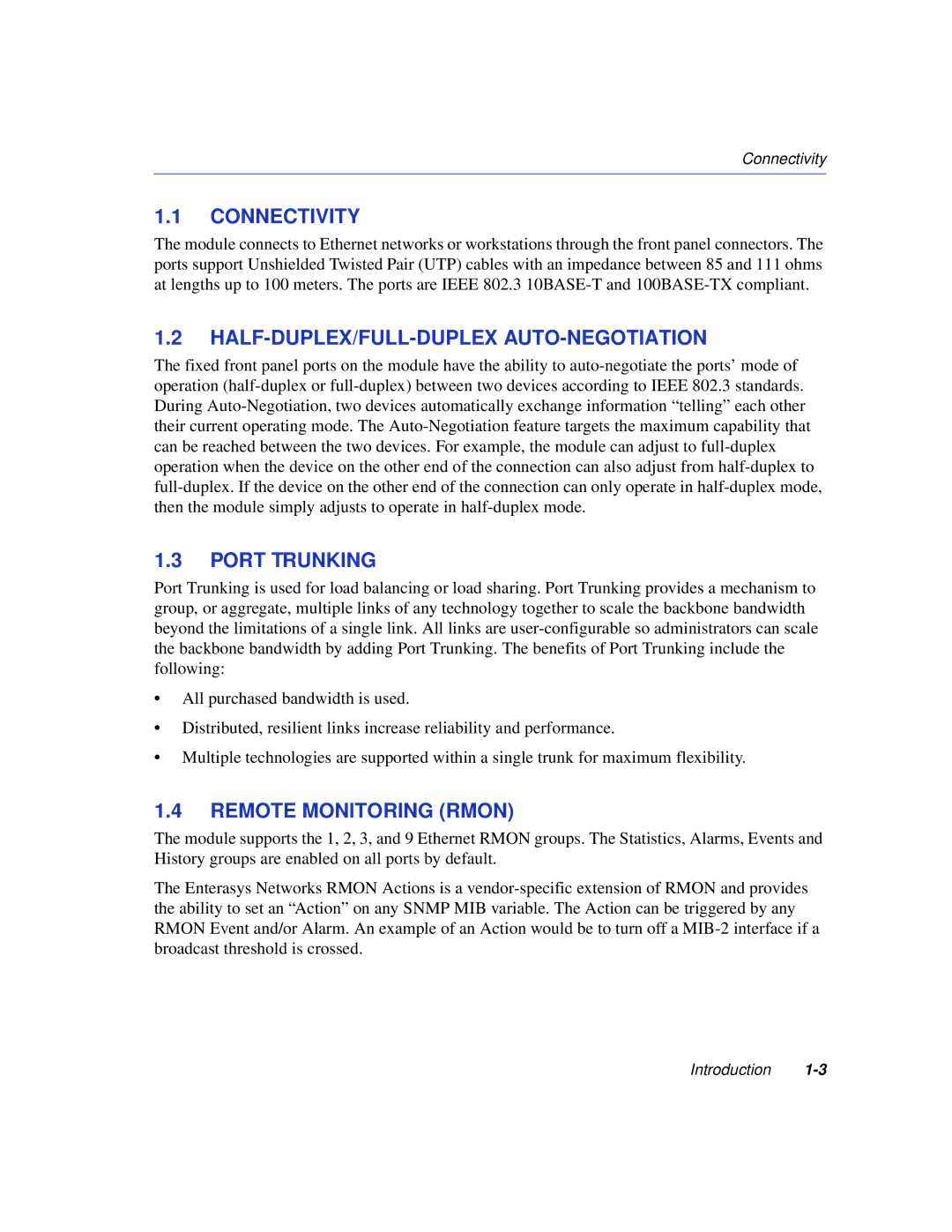Connectivity
1.1CONNECTIVITY
The module connects to Ethernet networks or workstations through the front panel connectors. The ports support Unshielded Twisted Pair (UTP) cables with an impedance between 85 and 111 ohms at lengths up to 100 meters. The ports are IEEE 802.3
1.2HALF-DUPLEX/FULL-DUPLEX AUTO-NEGOTIATION
The fixed front panel ports on the module have the ability to
1.3PORT TRUNKING
Port Trunking is used for load balancing or load sharing. Port Trunking provides a mechanism to group, or aggregate, multiple links of any technology together to scale the backbone bandwidth beyond the limitations of a single link. All links are
•All purchased bandwidth is used.
•Distributed, resilient links increase reliability and performance.
•Multiple technologies are supported within a single trunk for maximum flexibility.
1.4REMOTE MONITORING (RMON)
The module supports the 1, 2, 3, and 9 Ethernet RMON groups. The Statistics, Alarms, Events and History groups are enabled on all ports by default.
The Enterasys Networks RMON Actions is a
